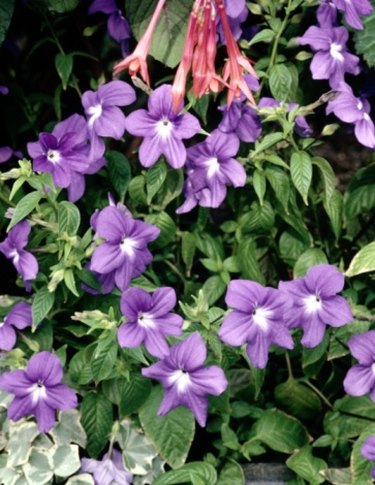
Vinca (Vinca minor), also referred to as periwinkle and myrtle, is an evergreen groundcover that grows up to 6 inches tall. The plant blooms with bluish-purple, lavender or white flowers and has elliptical, glossy foliage. A fungal disease leads to yellowing vinca foliage.
Identification
Video of the Day
Vinca is susceptible to verticillium wilt, a fungal disease caused by Verticillium dahliae and V. albo-atrum. The soil-borne fungi usually infect plants during cool weather and the symptoms start to appear as the temperatures start to get warmer. Damage is more pronounced in culturally stressed plants.
Video of the Day
Damage
The disease is characterized by wilting foliage of infected vinca plants. The leaves start to yellow at the margins and then between the veins. As disease progresses, leaves turn brown and die. Damage starts from the base of plant and moves upwards. The older foliage is often damaged earlier than the younger leaves.
Management
Use resistant plant varieties in areas with known cases of verticillium. Obtain plants from reliable sources. The University of California Extension recommends solarizing soil to reduce chances of infection.